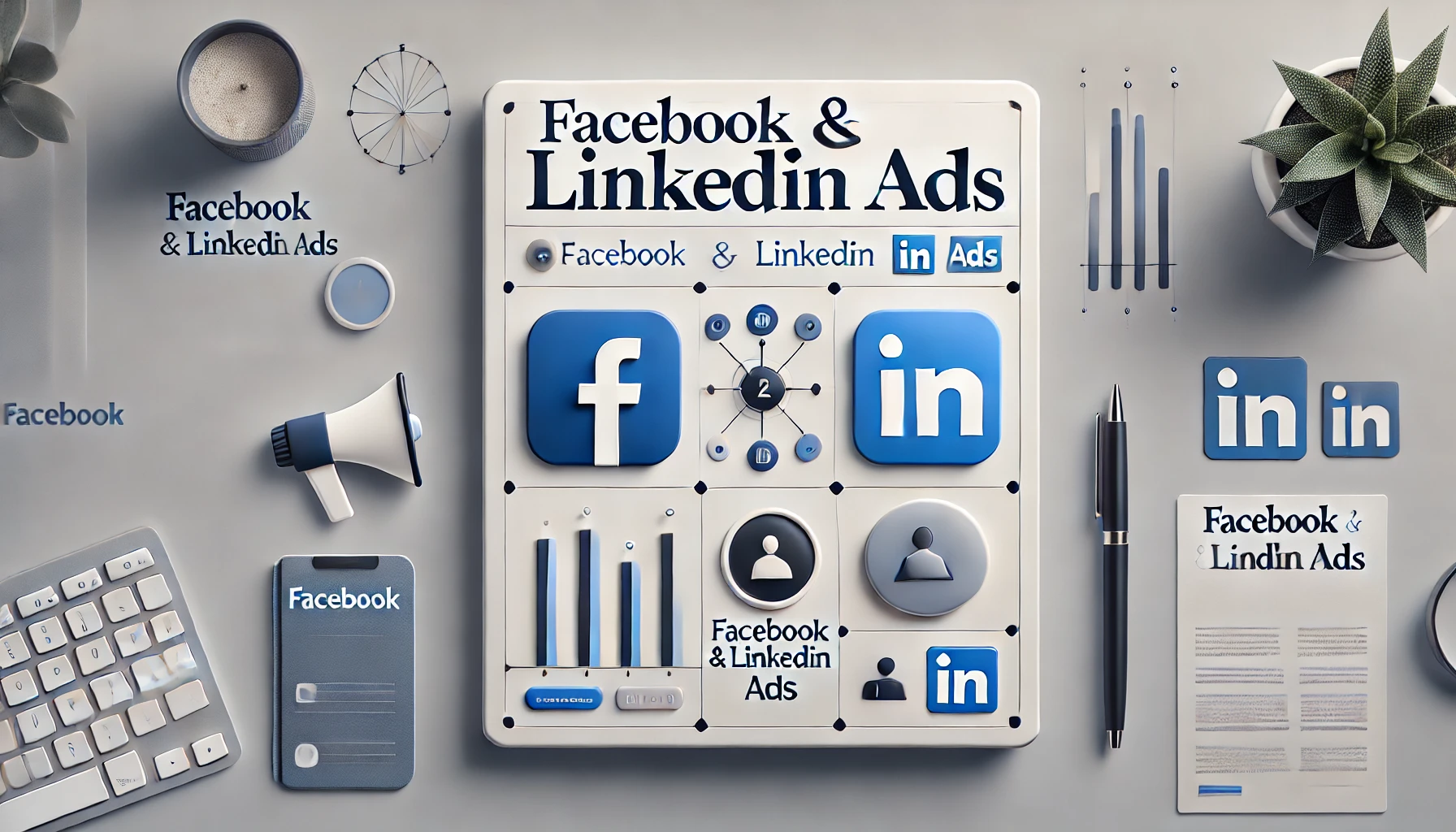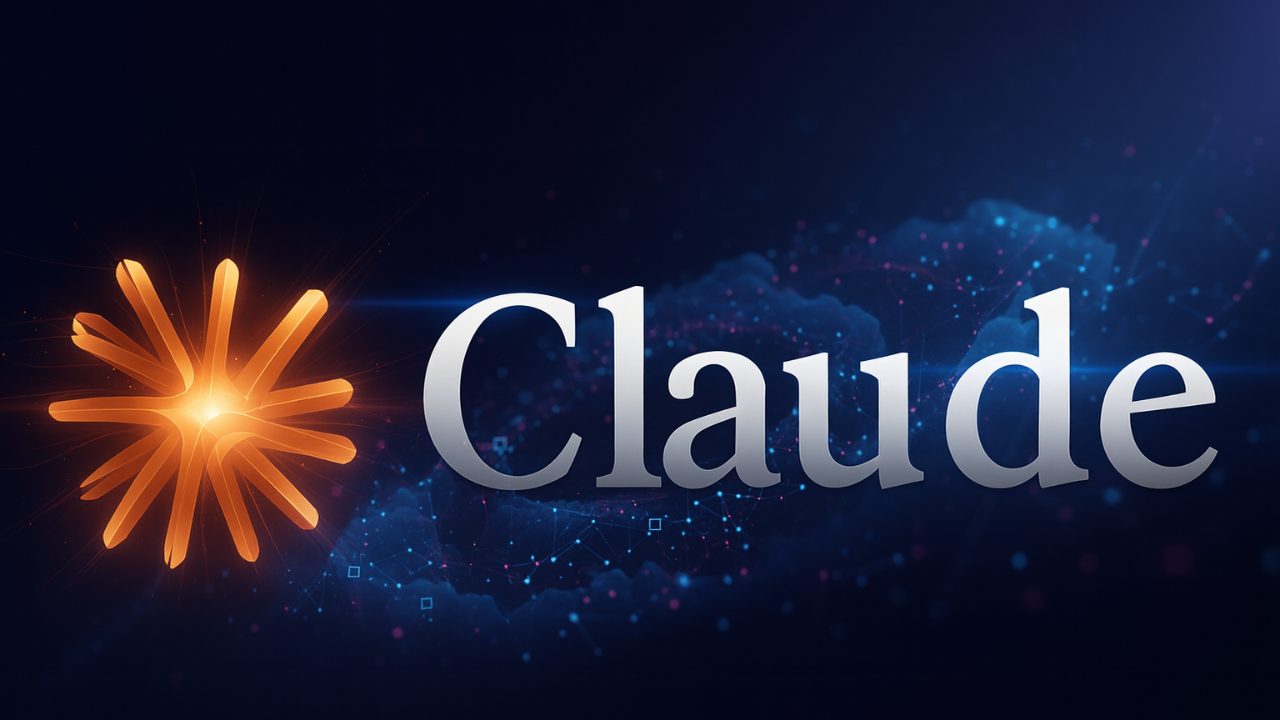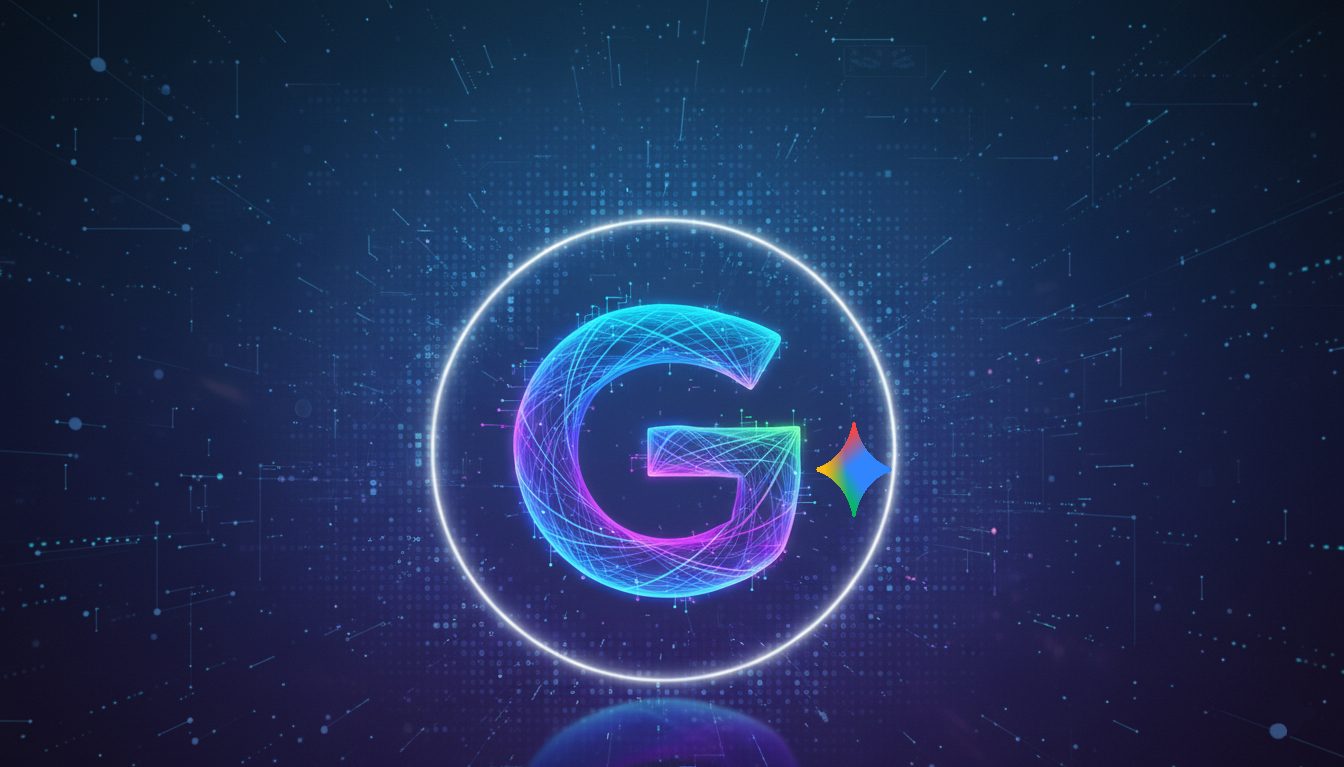Ready to ditch the “spray and pray” approach to marketing?
Lead generation puts you in control, allowing you to hand-pick the customers who are most likely to become loyal clients. Think of it as a personalized GPS showing you directly to your ideal audience.
This guide explores how to use Facebook and LinkedIn lead generation ads to create that GPS.
We’ll show you real-world examples that shine, how to craft ads that resonate with your perfect customer, and how to design forms that make it easy for them to connect with your business.
Let’s unlock the power of lead generation together and watch your business grow.
Understanding Lead Generation Ads in Digital Marketing
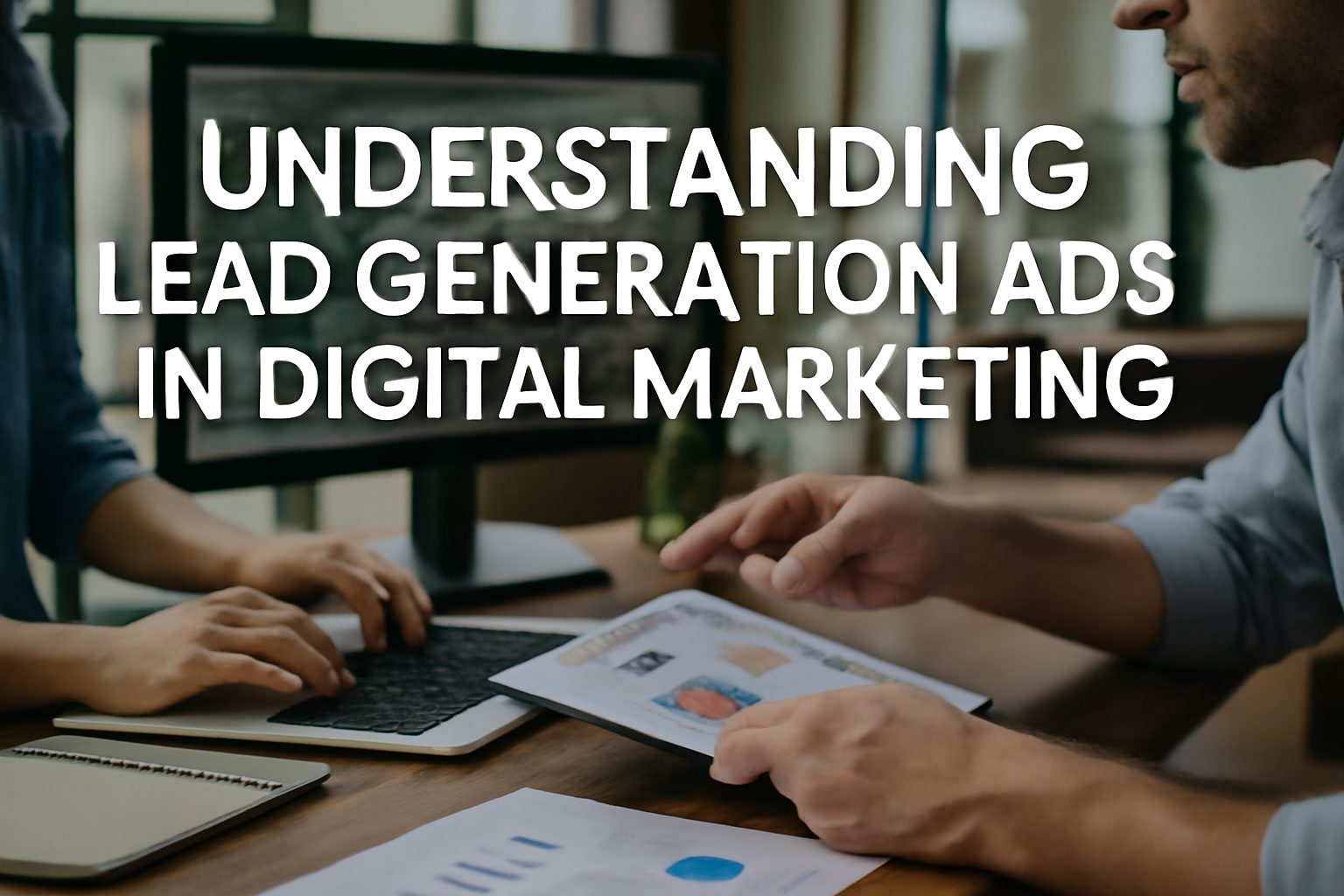
Let’s start by answering some pressing questions you might have.
What does lead generation really mean and how do lead ads simplify the process of bringing in quality leads?
What is lead generation in digital marketing?
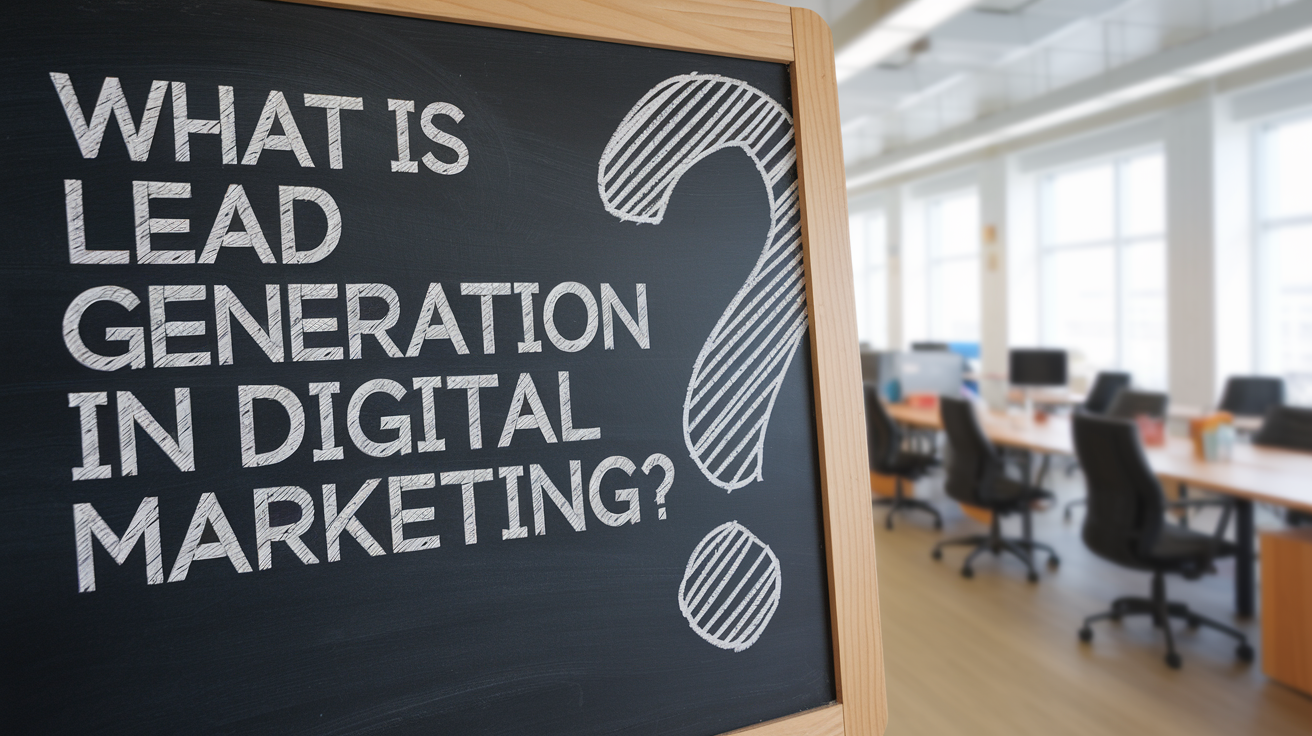
Lead generation is a key part of growing your business, yet 61% of marketers still say it’s their biggest challenge.
So, how can you improve your approach and make sure you’re capturing qualified leads?
1 – Guide Leads Through the Marketing Funnel
Lead generation doesn’t happen instantly. Only 2% of visitors convert on their first visit, so having a strong marketing funnel helps keep likely customers engaged over time.
2- Set Clear Marketing Goals
Your lead generation should always go hand in hand with your marketing goals. Whether it’s improving conversion rates or growing your email list, goals help guide your strategy and refine your tactics.
By focusing on these points to start, you can better capture your target audience and keep them engaged through the lead generation process.
What are Lead Ads?
Think of lead ads as your direct line to capturing valuable information from people who are already interested in what you offer.
These ads pop up right where your developing customers are—whether they’re scrolling on Facebook or LinkedIn—making it easy for them to share their contact details without leaving the platform.
But the good news is that Facebook and LinkedIn both simplify this process.
For example, Facebook generation ads use pre-filled instant forms that allow people to sign up or request more information in just a few clicks. LinkedIn takes it a step further with its auto-fill feature, making it even easier by pulling in professional details straight from the user’s profile. That means less hassle for them and more high-quality leads for you.
Pro Tip: If this feels like too much to juggle, and your business plate is already overflowing, consider working with a digital marketing agency that specializes in Facebook and LinkedIn lead ads. It’ll save you time and get better results.
Lead Targeting and Strategy
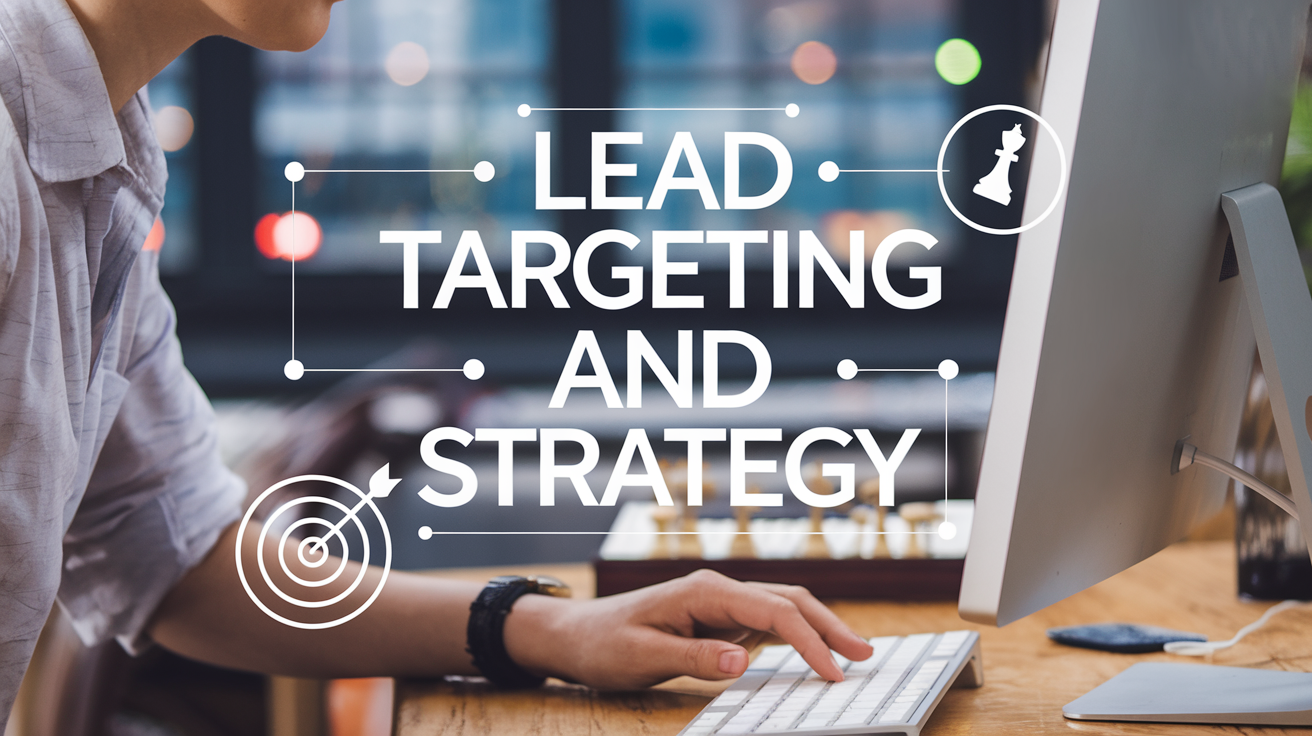
Next, let’s explore how to develop a lead generation strategy that pinpoints your ideal audience and guides them toward a purchase.
What goes into a lead generation strategy?
A well-defined lead generation strategy ensures you attract the right customers and get the most out of your marketing investment. It has several key parts:
1. Know Your Customer: We think you should go beyond basic demographics and use advanced data integration. Combine data from your CRM, website analytics, and marketing automation platforms to get a complete view of your customers. This helps you personalize your messages and tailor your offers to their exact needs.
2. Strategic Spending: Smart budget allocation is key to getting the most out of your investment. Analyze your click-through rates, completion rates, and conversion data to see which channels are working best. This allows you to spend wisely, focusing on the areas that bring in the most customers.
3. Platform Power: Not all platforms are created equal. Where does your precise audience hang out online? Facebook might be great for reaching people every day, while LinkedIn is better for targeting professionals. Matching your ads strategy to the platform’s strengths is key for campaign efficiency.
4. Value First: Offer valuable content that addresses your audience‘s needs. This could be ebooks, guides, or free consultations. By providing value upfront, you build trust, making it more likely that your customers in the making will share their information.
Pro Tip:
Every part of your lead generation campaign setup should be designed to drive conversions. This means writing strong ad copy, designing user-friendly forms, and providing a clear call to action.
What is qualified lead generation?
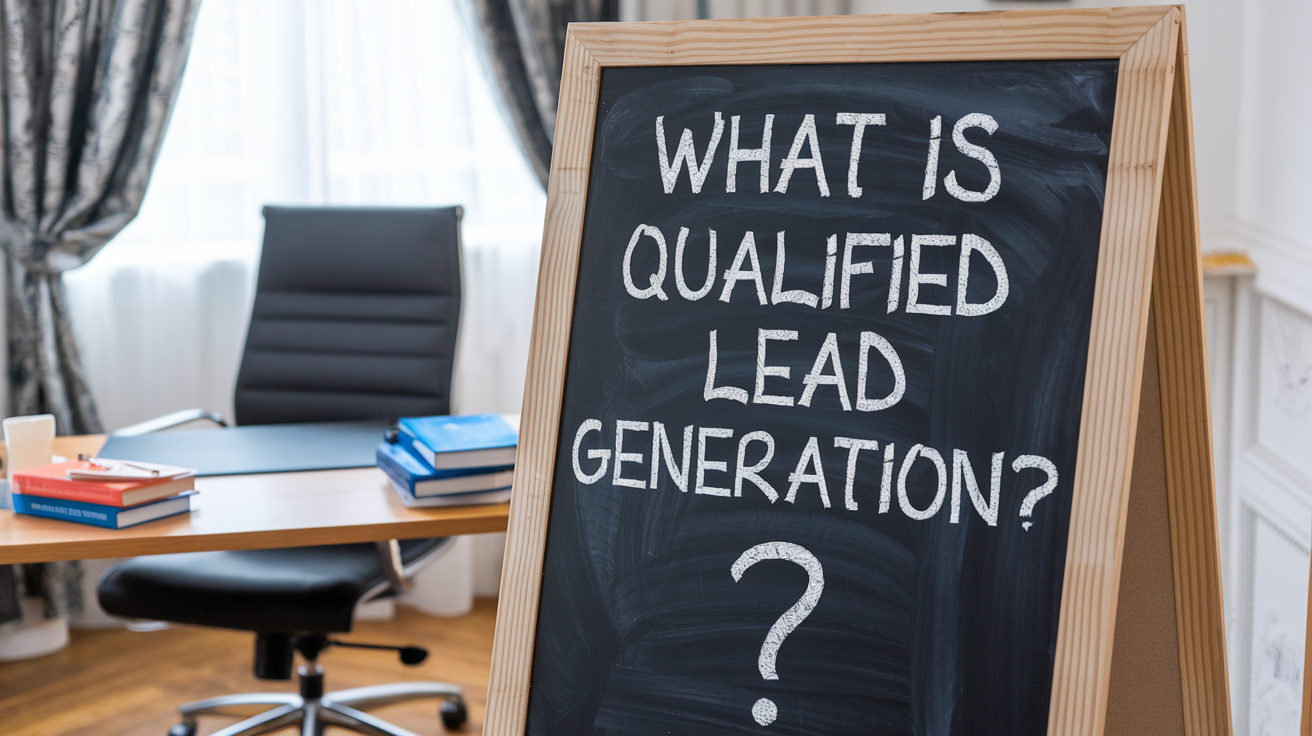
Not all leads are created equal. Imagine you’re a fitness coach: someone downloading your workout plan is a lead, but so is someone signing up for your email list after seeing a funny meme.
Who’s more likely to pay for your services? That’s where qualified lead generation comes in.
A qualified lead is an unrealized customer already warmed up and ready for action. They fit your target customer profile and have a higher chance of converting into a paying customer.
Think of it like this:
- General lead: Someone who shows mild interest (e.g., downloads a free resource).
- Qualified lead: Someone who takes a specific action that suggests strong interest (e.g., requests a consultation, adds a product to their cart).
How do you find these gems? Precise targeting is key. Use custom questions and conditional questions in your lead forms to filter out those who aren’t a good fit.
Pro Tip:
To manage these leads smoothly, consider using customer relationship management (CRM) tools.
These tools offer quick integrations for real-time lead syncing and provide a central hub for all your customer interactions.
Overview of Lead Generation Campaigns
We’ve touched on some basics for you, now let’s look at why lead generation campaigns are your key to success. Here’s how to craft them for maximum impact.
What is a Lead Generation Campaign?
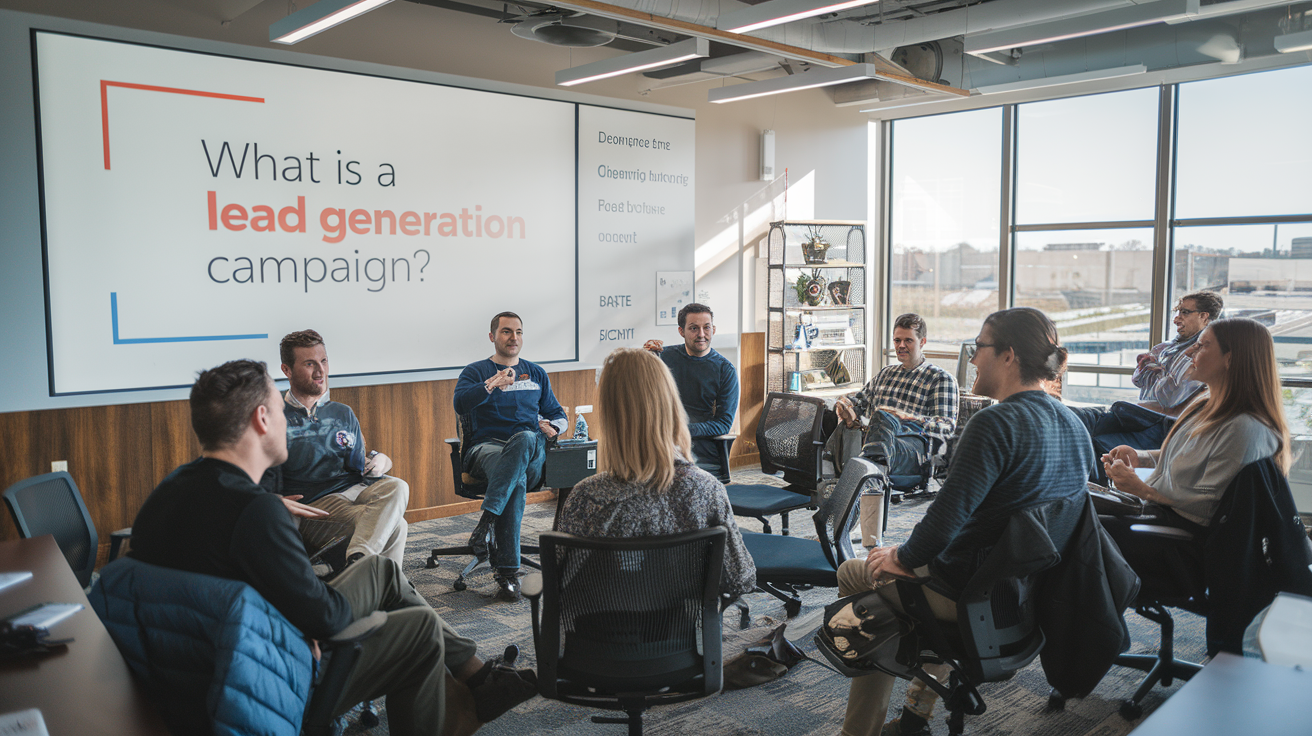
Think of a lead generation campaign as a well-oiled machine designed to attract and convert your ideal customers. It’s a strategic process, like setting up a brilliant domino rally:
- First Domino: You grab attention with something compelling (a captivating ad, a thought-provoking post).
- Chain Reaction: You offer valuable content or a tempting incentive (a free guide, a discount code, a webinar).
- Final Domino Falls: You make it easy for them to take action (a simple form, a clear call to action).
These generation campaigns are the backbone of your marketing strategy. They provide a structured approach to capturing leads through targeted ads and engaging online experiences.
By focusing on your ideal customer profile and tailoring your campaigns to demographics and interests, you can increase your chances of generating high-quality leads that are more likely to convert.

To make your campaigns successful, you need to use the right tools. Platforms like HubSpot and Marketo allow for real-time lead syncing, so you always have up-to-date information on your prospects.
They also offer enhanced analytics tools to help you track campaign performance, allowing you to refine your strategy as you go.
Pro Tip: Dedicated landing pages designed for capturing lead details help to eliminate distractions and increase conversion rates.
Lead Generation Campaign Types and Examples
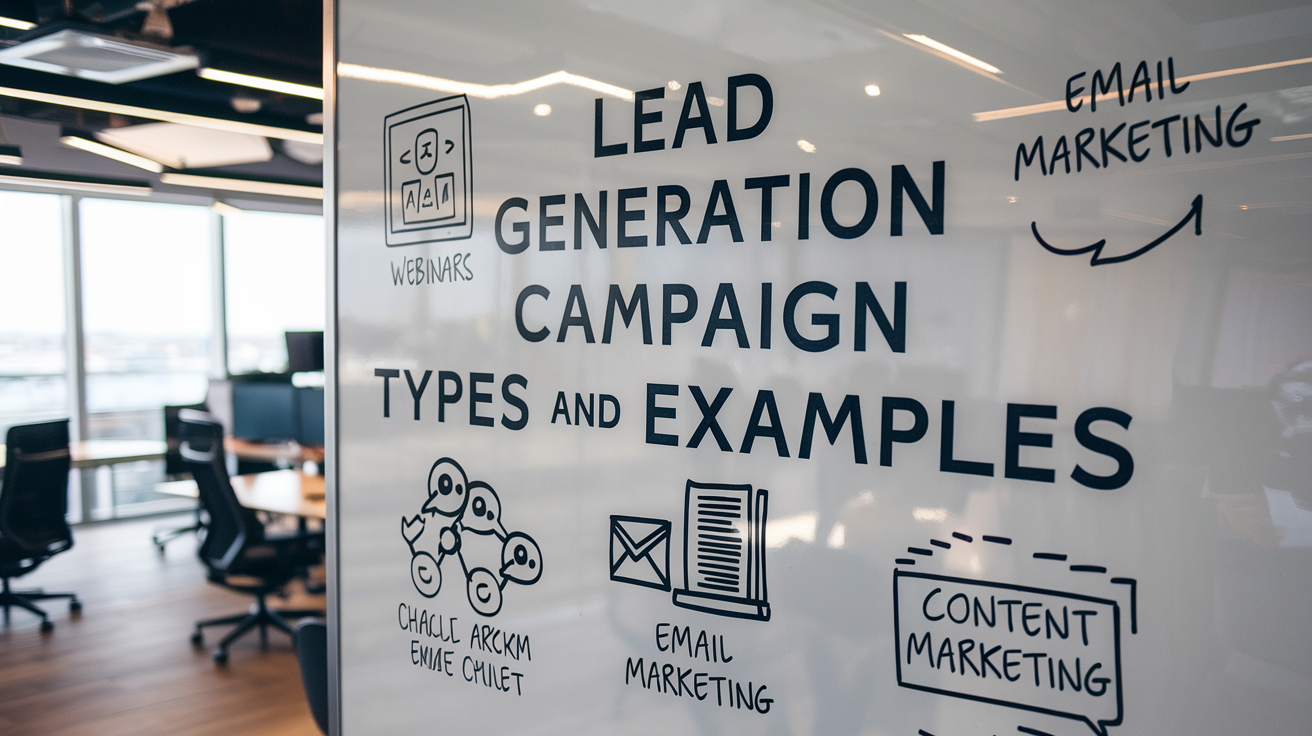
Lead generation campaigns are like different paths leading to the same destination: a growing list of potential customers you need to hook in. Some paths are direct, others scenic, but they all aim to capture interest and convert it into valuable leads.
Types of Lead Generation Campaigns
– Inbound vs. Outbound
Inbound: Like a welcoming storefront, these campaigns focus on attracting leads who are already interested in what you offer. Think valuable content like blog posts, ebooks, or webinars that draw your precise audience in.
Outbound: Like a friendly salesperson, these campaigns involve reaching out to potential leads who may not be familiar with your business. Think email campaigns or targeted advertising.
– Organic vs. Paid
Organic: These campaigns rely on attracting leads through non-paid methods, like a captivating window display. Think search engine optimization (SEO) or social media engagement.
Paid: These campaigns use paid advertising to reach a wider audience and generate leads. Think conversion ads or discount lead ads.
Examples of Lead Generation Campaigns
– Free Consultation or Assessment:
You can provide a free consultation or assessment to demonstrate your expertise and build trust with future customers. This allows you to connect with leads on a personal level, understand their needs, and position yourself as a solution provider.
This is something we put into practice ourselves at Nomadic, with a free 30-minute consultation for all new customers.
– Contest or Giveaway:
You could also host a contest or giveaway that requires participants to provide their contact information for a chance to win a prize. This can be a fun and engaging way to generate a large number of leads.
Facebook Lead Generation Ads
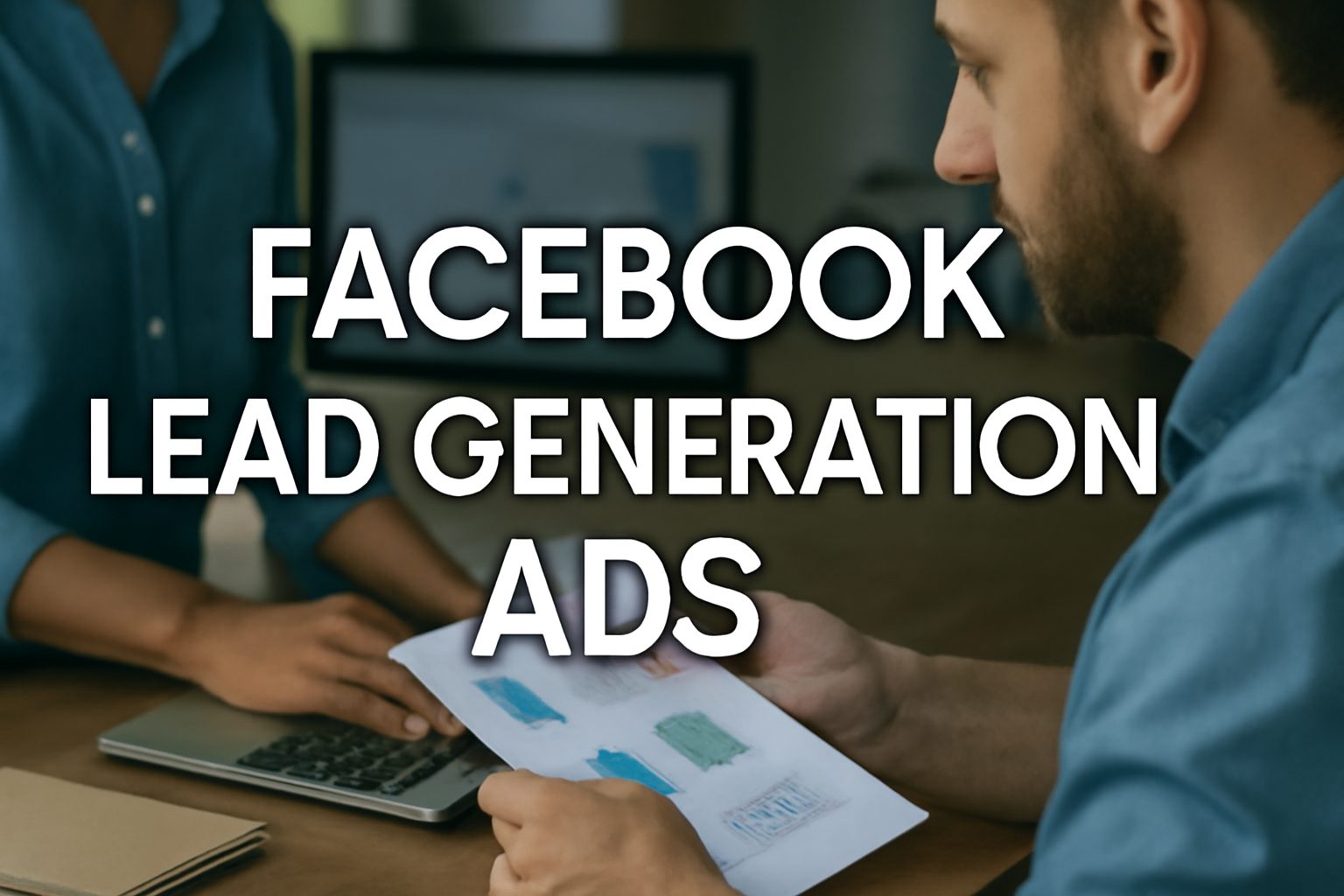
Facebook’s massive user base presents a huge opportunity to connect with potential customers. Let’s explore how Facebook Lead Ads can help you tap into this audience and generate high-quality leads without breaking the bank.
What is a Lead Ad on Facebook?
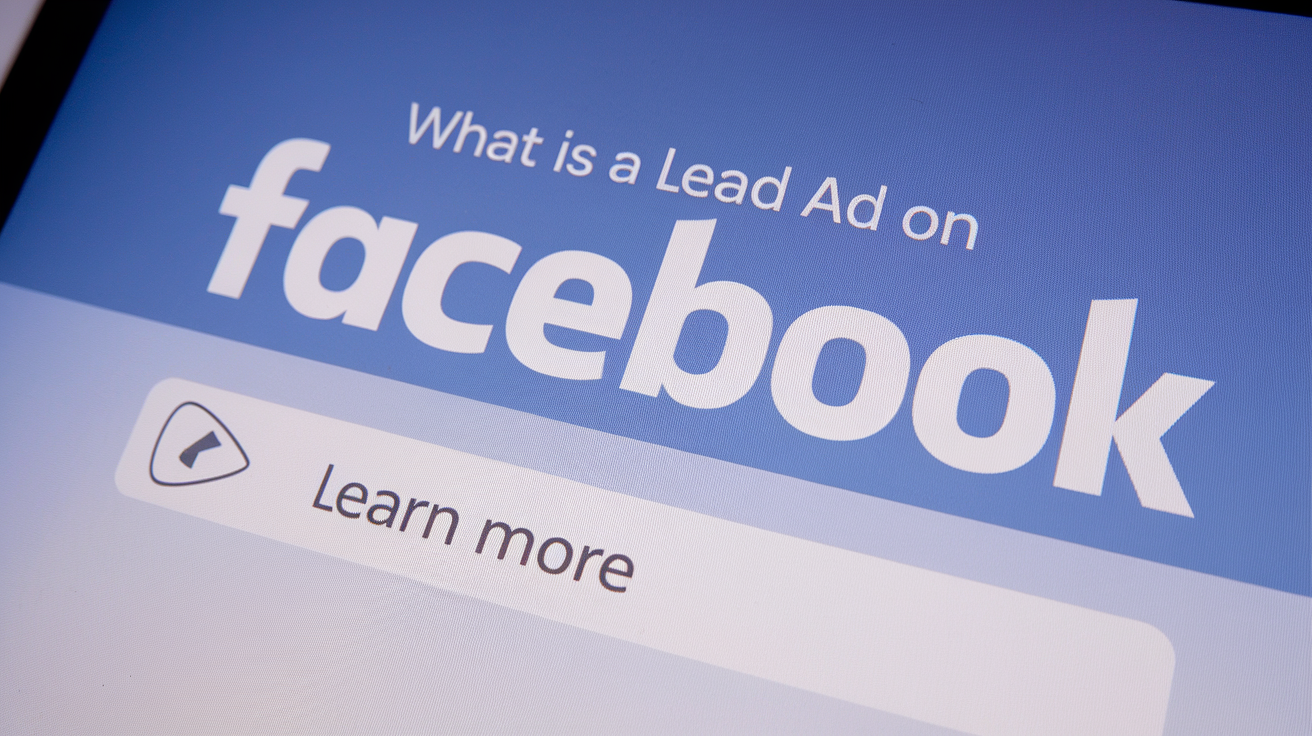
On Facebook, millions of users scroll through their feeds every day. Facebook Lead Ads simplify the process of connecting with these users by allowing them to provide their information directly within the platform.
Here’s how it works:
A user sees your ad, clicks, and a contact form appears within Facebook—no new tabs, no disruptions. This helps them quickly become a lead without distractions.
The form is often pre-filled with key details like their name and email from their Facebook profile. This auto-fill feature improves completion rates by saving time and reducing manual effort.
Facebook Lead Ads offer key benefits:
- Better User Experience: Staying within Facebook minimizes disruption, leading to higher engagement.
- Valuable Audience Insights: Facebook’s tools help you refine targeting and improve campaigns with data-driven insights.
- Cost-Effective: Facebook Lead Ads often outperform industry standards in cost-efficiency.
The bottom line? Integrating these ads into your Facebook strategy allows you to collect lead information and guide them toward making a purchase from your business.
Creating Facebook Lead Generation Forms
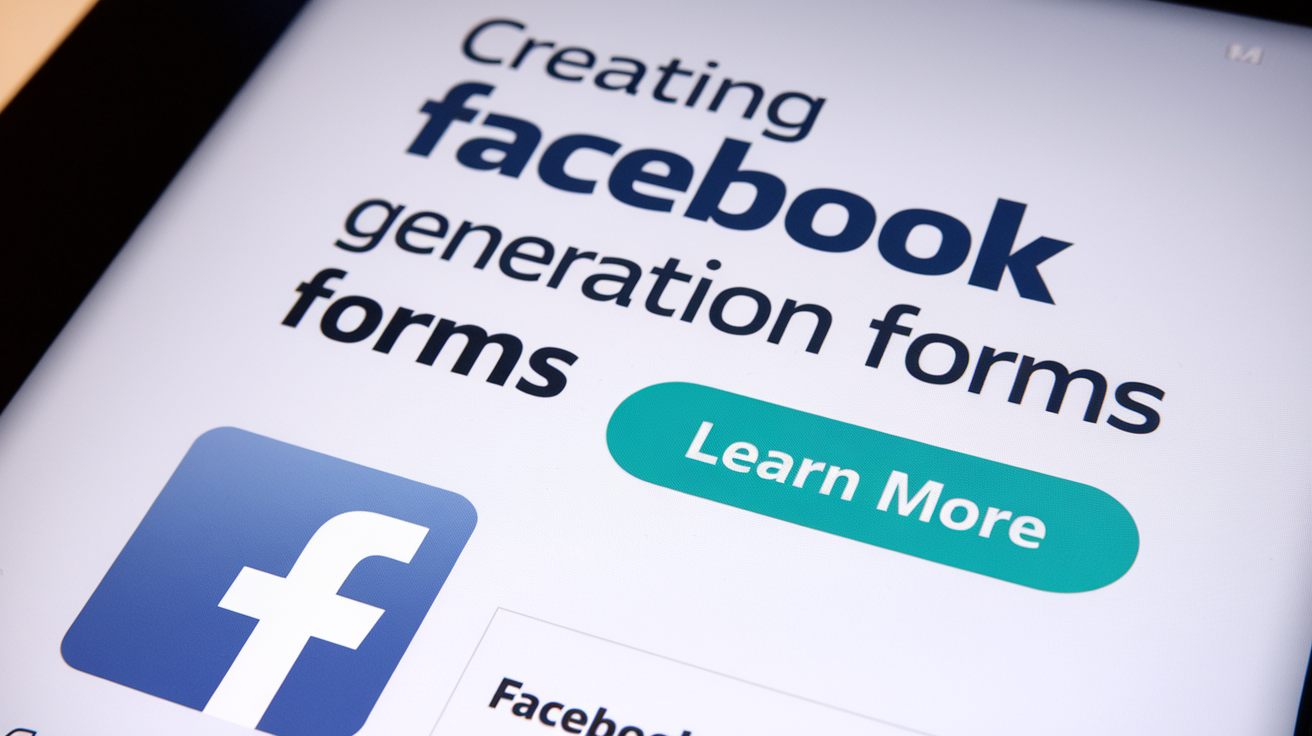
To create a Facebook Lead Generation Form, follow these key steps:
1 – Set Up in Ads Manager:
Start by logging into Facebook Ads Manager. Click the “Create” button and choose the “Lead Generation” objective. Name your campaign and configure basic settings like your business page, target audience, and ad placements. You can opt for automatic placements to let Facebook handle the optimization or choose specific placements like mobile users
2 – Design Your Form:
When building the form, keep it simple but impactful. Include fields for key information such as name, email, and phone number. Avoid overwhelming users by only asking for essential details—more fields can lower submission rates. For better engagement, use a compelling action button (like “Sign Up” or “Get Offer”) that clearly conveys the next step
3 – Optimize for Mobile Users:
Since most Facebook traffic comes from mobile devices, ensure the form is mobile-friendly. Use concise copy and large, easy-to-tap buttons. A faster-loading form can increase submission rates significantly, so avoid any unnecessary complexity
4 – Best Practices for High-Quality Leads:
Facebook offers the option to use a “Higher Intent” form, which adds a confirmation screen before submission, helping filter out low-quality leads. Additionally, providing a clear privacy policy link builds trust with users and ensures compliance
5 – Tracking and Follow-up:
After form submission, create a strong follow-up plan. Use the CRM integrations we touched on earlier to track and manage leads.
Facebook Lead Generation Ad Examples
In May of 2024, Equiti’s ad used a simple, static image of trading products and a clear “Sign Up” button to drive user engagement.
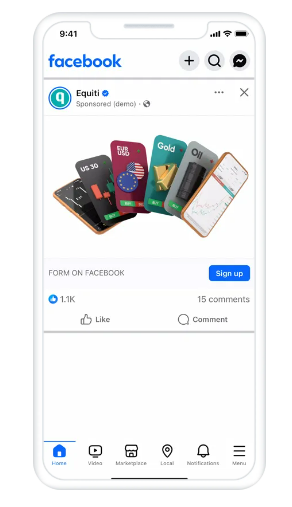
The campaign goal was to increase leads through ads integration with Messenger, which allowed real-time contact and follow-up actions. This strategy helped gather contact details from prospective customers, improving both lead volume and quality.
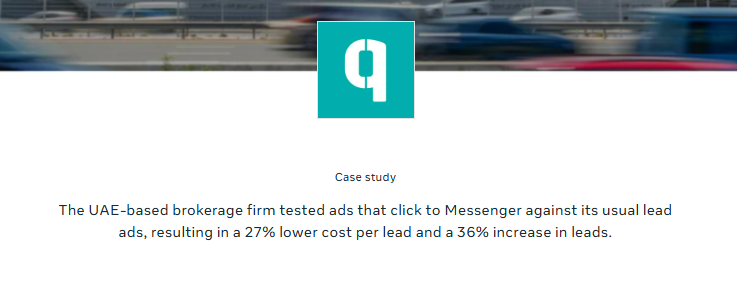
By targeting a custom audience, Equiti achieved an impressive 36% increase in leads and a 27% reduction in lead cost.
Facebook lead forms example
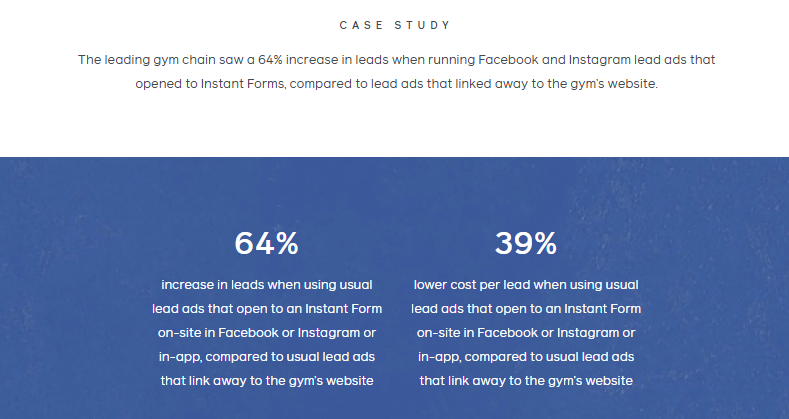
For their highly successful Ads campaign, GymNation used Instant Forms on Facebook and Instagram to significantly increase both lead quality and volume.
They found that leads generated within the app, using auto-populated contact fields like email addresses, resulted in a 64% increase in submissions and a 39% lower cost per lead.
The form fields and action button on the Instant Form simplified the process, making it easier for users to submit their details without leaving the platform, improving both click-through rates and conversion rates.
LinkedIn Lead Gen Forms
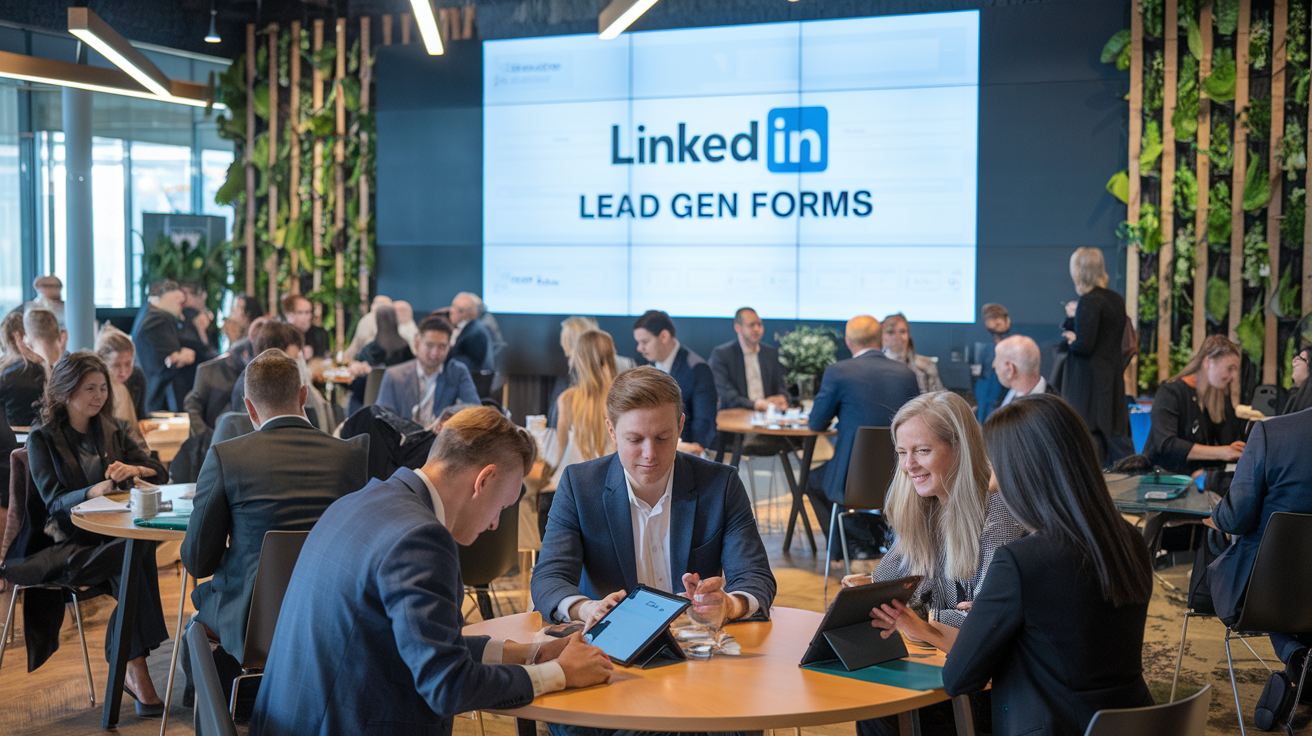
While Facebook is great for targeting the general population, LinkedIn is your go-to if you want to reach decision-makers and industry leaders who are already interested in your business. The platform Lead Gen Forms makes it easy to capture high-quality, professional leads without the hassle of traditional contact forms.
What are LinkedIn Lead Gen Forms?
Imagine being at a networking event where you don’t need to exchange business cards because all the key information is already gathered for you. LinkedIn Lead Gen Forms do just that online – capturing leads with pre-filled details like job titles and email addresses pulled from users’ LinkedIn profiles.
These forms help businesses collect high-quality leads quickly, without the friction of manual data entry. Plus, they can be customized to capture specific information you need for your campaigns, and the leads can be integrated directly into your CRM system for follow-up.
Let’s look at how these CRM systems go hand in hand with LinkedIn in more detail.
Where Do LinkedIn Lead Gen Forms Go?
When someone submits a LinkedIn Lead Gen Form, the collected contact details are stored in LinkedIn’s Lead Manager. You can export the data as a CSV file or use real-time lead syncing to transfer it directly into CRM systems like:
- Salesforce
- HubSpot, or
- Pipedrive
This automated process eliminates the need for manual data entry and ensures that sales teams can contact leads quickly.
LinkedIn’s platform also provides tools to review key metrics such as form submission rates and lead quality. This allows businesses to keep an eye on campaign results and make adjustments for real-time campaign optimization.
By managing the spending within budget constraints, businesses can improve their marketing efforts while aligning their conversion campaigns with broader digital marketing strategies.
LinkedIn Lead Gen Form Example
We’ve already explored a lot of valuable strategies for LinkedIn Lead Gen Forms, so let’s now focus on three more advanced practices that can help you further refine your forms:
- Custom Question Branching: By using conditional logic, you can adapt your form based on user responses. This approach makes the form feel more relevant, which can improve how engaged your precise audience is with the questions you’re asking.
- Multilingual Form Support: For global campaigns, creating forms in multiple languages can help you reach a broader active user base and ensure higher engagement from international leads.
- Integration with LinkedIn Sales Navigator: Connecting Lead Gen Forms with Sales Navigator enables your sales team to access more detailed lead information. This approach improves marketing efficiency by helping your sales team take quicker, more personalized follow-up actions.

German company Matmatch helps engineers and designers find and compare materials for projects via an online database – and they used LinkedIn lead gen with great success.
Their campaign objective was to generate high-quality leads while lowering their CPL. By leveraging Lead Gen Forms with Sponsored Content and InMail, they strategically targeted suppliers.
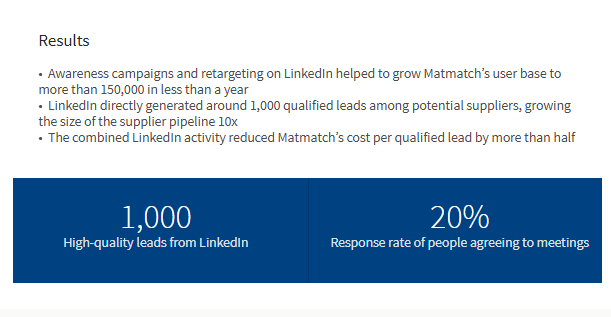
(Source)
This strategy expanded their customer list by 10x, delivering over 1,000 qualified leads, while also cutting their CPL by more than half. With thoughtful advertising budget management and retargeting, they maintained strong results.
Lead generation strategies on Facebook and LinkedIn
Let’s leave you with some final tips we haven’t covered yet:
- Test Different Incentives: While form structure is important, the incentive (e.g., e-book, discount, webinar) can significantly impact conversion rates. Test multiple offers to determine what clicks most with your audience on each platform.
- Consider Multi-Step Forms: While shorter forms often lead to higher submission rates, more complex products or services may benefit from multi-step forms that gradually collect more detailed information. Test whether this increases qualified leads on LinkedIn, where more professional data is relevant, versus Facebook.
- A/B Testing: Regularly test form length, CTA wording, imagery, and field types. For example, A/B test using a pre-filled email field versus asking for a secondary email address. Even the smallest changes can improve conversion rates.
- Optimize Your Follow-Up Speed: Studies have shown that contacting leads within minutes of submission significantly improves conversion rates.
By syncing your CRM systems with real-time lead syncing features, you can drastically reduce response time, ensuring your follow-up strategy remains prompt and relevant.
Need a Helping Hand with Your Lead Generation?
Don’t know your CRM from your CSV? Lead generation can feel like a confusing puzzle of acronyms and technical jargon.
Then there’s CPL, CTR, A/B testing, etc – it can leave even the most seasoned industry expert scratching their heads.
Book a free 30-minute consultation with us today and let’s turn those A/B test anxieties into advantageous ad campaigns.
Key Takeaways
- Facebook and LinkedIn lead ads use auto-fill forms, cutting submission time and increasing quality leads.
- Smart lead gen: Know your audience, automate tasks, spend wisely, offer value first.
- Identify hot leads with targeted form questions; manage them via CRM integration.
- Facebook’s broad reach vs. LinkedIn’s pro targeting – pick your battlefield.
- Always test: Try multi-step forms, tweak CTAs, and follow up fast to improve results.

